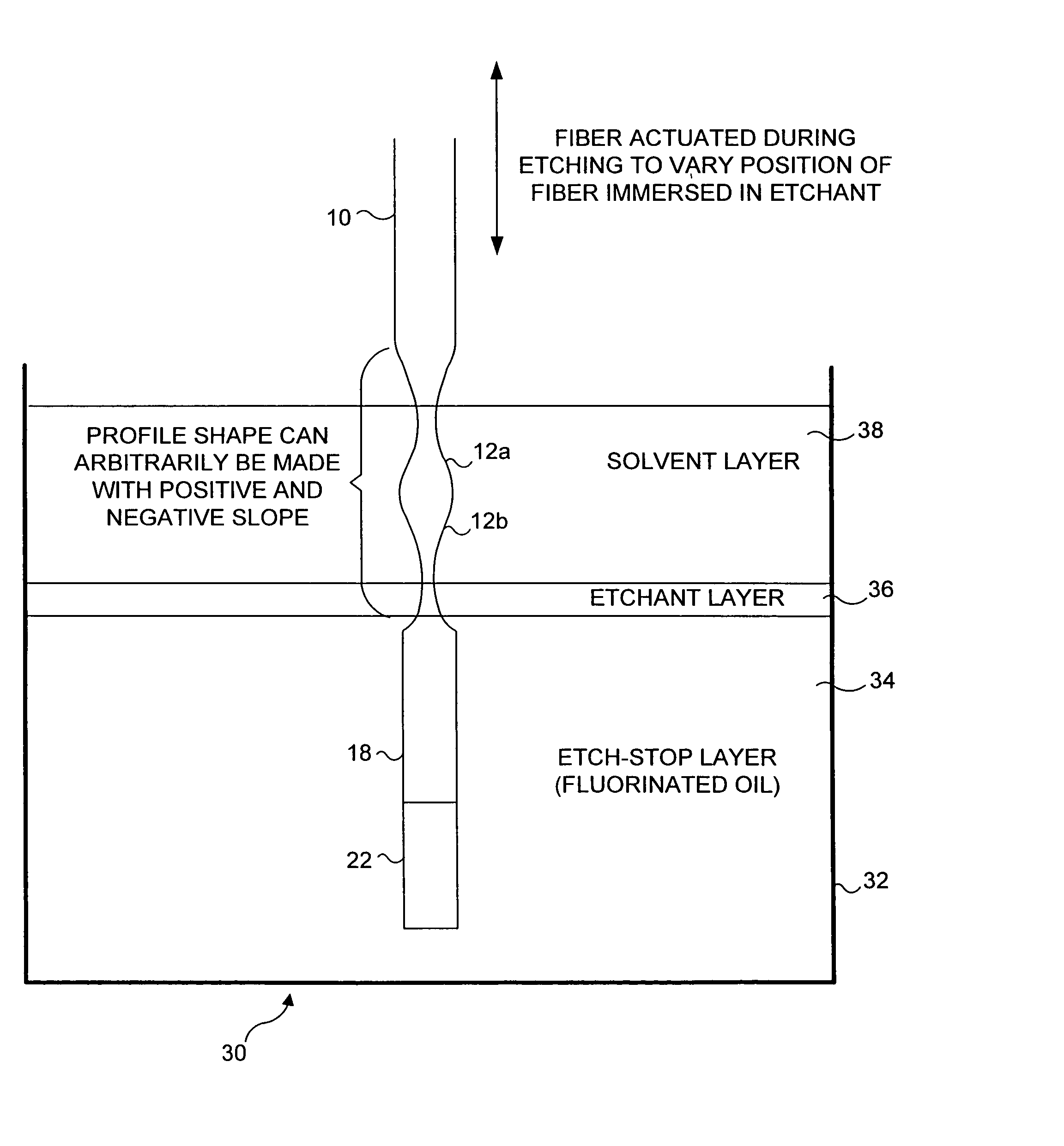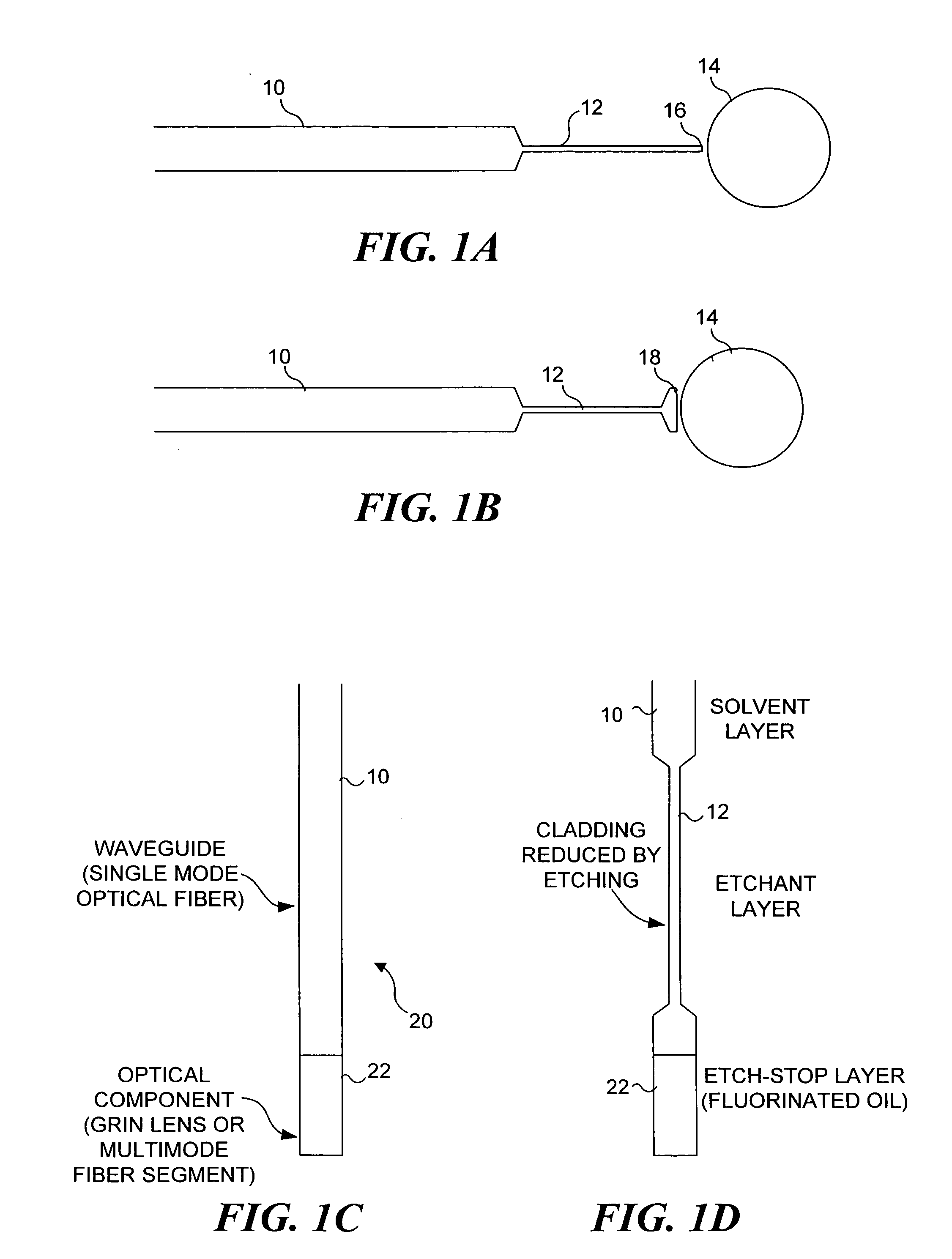Optical beam scanning system for compact image display or image acquisition
a scanning system and optical fiber technology, applied in the field of relativly compact optical fiber beam scanning system and method for displaying or acquiring images, can solve the problems of unnecessary additional optical coupling and alignment, complex design and fabrication of multiple actuators that drive mirror-based systems,
- Summary
- Abstract
- Description
- Claims
- Application Information
AI Technical Summary
Benefits of technology
Problems solved by technology
Method used
Image
Examples
Embodiment Construction
Construction of a Scanning Optical Fiber
[0048] When using fusion splicing for joining an optical fiber to optical components (e.g., to a GRIN lens or larger core multimode optical fiber), it is preferable to carry out any etching of the optical fiber after the fusion splicing has been completed, because it is easier to work with the optical fiber during the fusion process before it is made more flexible by being etched to a reduced diameter. Optical fiber scanning applications rely on the reduced diameter and mass distributions along the optical fiber to produce a relatively wide FOV at video rate scan frequencies. However, the extremely small (e.g., about 10-50 microns) diameter of a distal tip 16 of an etched region 12 on an optical fiber 10 (typically single mode) makes the attachment of added optical components, such as a ball lens 14, to distal tip 16 difficult, as will be apparent from the example shown in FIG. 1A. Optical fiber scanning applications frequently require optic...
PUM
| Property | Measurement | Unit |
|---|---|---|
| frequencies | aaaaa | aaaaa |
| diameter | aaaaa | aaaaa |
| diameter | aaaaa | aaaaa |
Abstract
Description
Claims
Application Information
 Login to View More
Login to View More - R&D
- Intellectual Property
- Life Sciences
- Materials
- Tech Scout
- Unparalleled Data Quality
- Higher Quality Content
- 60% Fewer Hallucinations
Browse by: Latest US Patents, China's latest patents, Technical Efficacy Thesaurus, Application Domain, Technology Topic, Popular Technical Reports.
© 2025 PatSnap. All rights reserved.Legal|Privacy policy|Modern Slavery Act Transparency Statement|Sitemap|About US| Contact US: help@patsnap.com



